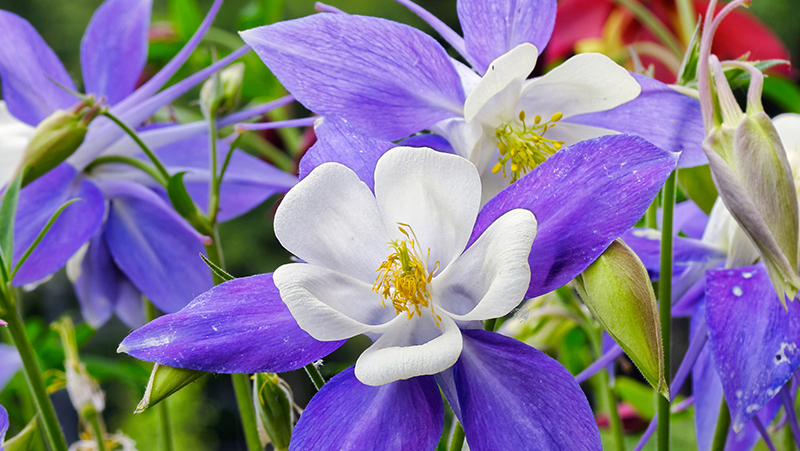Yates Account
Join now
Create a Yates account today!
Sign up to join the Yates Garden Club for monthly e-mails packed with seasonal inspiration, tips for success & exclusive promotions.
Plus if you’re a Garden Club member you can take part in the Yates Growing Community - a blog to share successes, get advice & win prizes in fun challenges along the way!

Forgot password
Enter the email address associated with your account, and we'll email you a new password.

Aquilegias (Aquilegia caerulea) are beautiful and uniquely shaped flowers that appear in spring and present in cream, pink, yellow and lavender colours. They have a great appeal in cottage style gardens and stand out with their long spurred flower heads that sit all so daintily above the blue green foliage.
How to grow aquilegias in a garden
- Fill starter pots or trays with Yates Black Magic Seed Raising Mix. Sow seeds, cover, firm down and water well. Keep the soil moist so the seeds don’t dry out.
- While the seedlings are growing, choose a spot in the garden that receives full sun to part shade and prepare the planting area well by digging in Yates Dynamic Lifter Organic Plant Food.
- Water gently and keep moist through germination period.
- Allow the seedlings to grow to at least 5-7 cm before transplanting.
- When transplanting them into your prepared garden bed, ensure seedlings are well spaced – at least 30 to 40cm apart. Water in well.
- Mulch with an organic mulch, such as bark chips or pea straw.
- Feed regularly with Yates Thrive Rose & Flower Granular Plant Food.

How to grow aquilegias in a pot
- Choose a pot at least 200mm wide and deep. Position in full sun to part shade.
- Fill the chosen pots with quality potting mix, such as Yates Premium Potting Mix.
- Plant directly into the pot by pressing the seeds lightly into the surface of the pot.
- Water gently and keep moist through germination period.
- Feed every 1 to 2 weeks with Yates Thrive Natural Fish & Seaweed+ Plant Food Concentrate.
Highly attractive and uniquely shaped flowers in cream, pink, yellow and lavender appearing in Spring.
Growing tips
- Each dangling, bell-shaped flower has five petals that flare out from the base, surrounded by a collar of five larger sepals.
- Most varieties of Aquilegia plants will bloom for at least four weeks.
- Aquilegia plants are naturals in woodland and rock gardens. Their delicate fan-shaped foliage is a nice contrast to ferns and other shrubs since they hold their flowers high above the base of the plant.
- Aquilegia plants are adaptable, but they prefer an acidic soil pH of about 5.0 to 6.0.
- New plants will need to be kept moist until they become established. You'll know they are established when they start putting out a lot of new growth.
More Plants
Orange Trumpet Vine
Orange trumpet vine, with its brilliant cascading masses of orange tubular flowers, is one of the most spectacular winter flowering climbers.
Spring Stars
Spring Stars are a versatile addition to any garden with delightful lavender-blue, star shaped blooms.
Flax
Flaxes (Phormium spp.) are highly versatile plants which don't mind swampy or dry conditions. Great for large pots or planted en-masse in garden beds.
Proteas
Not just any old blossom, protea flowers are blooms with attitude. If you can give them full sun and reasonable drainage, proteas will love you.
Recommended products
Yates Black Magic Seed Raising Mix
Specially formulated for trouble-free seed raising in trays (or outdoor seed sowing direclty into the ground) and propagation of cuttings.
Yates Thrive Natural Fish & Seaweed+ Plant Food Concentrate
A complete plant food enriched with natural fish, seaweed, humates, molasses and more - boosted with NPK to improve plant and soil vitality.
Yates Thrive Rose & Flower Granular Plant Food
Specially formulated to grow all types of flowers. With high potassium for large & abundant flowers, added calcium & iron for stronger flowers.
Yates Thrive Natural Fish & Seaweed+ Plant Food Concentrate
A complete plant food enriched with natural fish, seaweed, humates, molasses and more - boosted with NPK to improve plant and soil vitality.
















Share
Share this article on social media